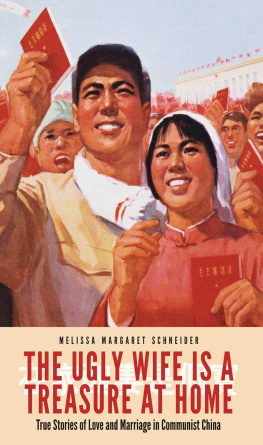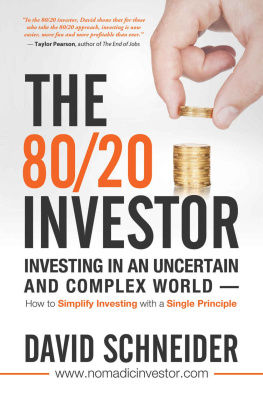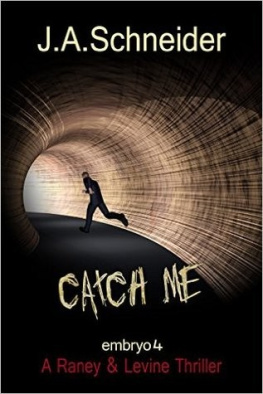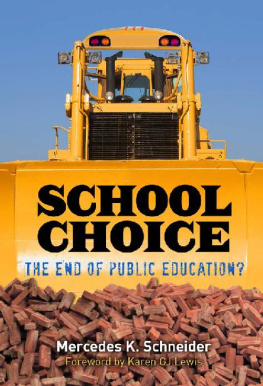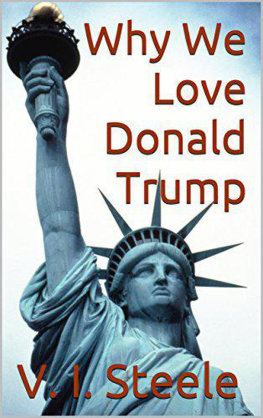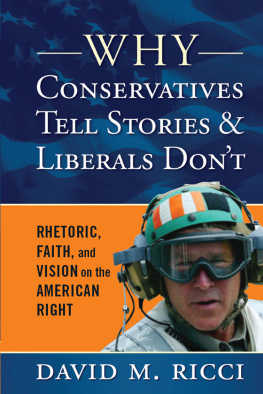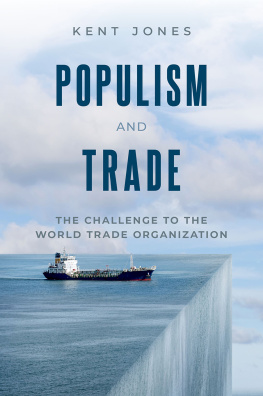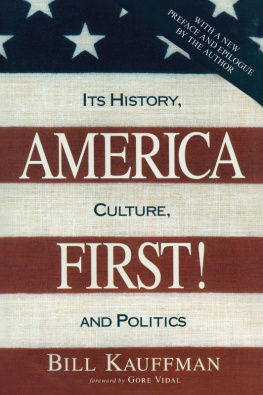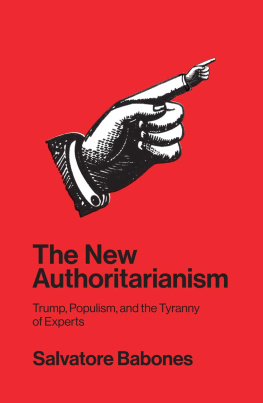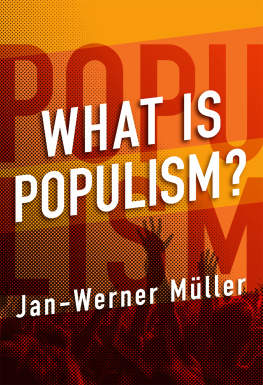Thank you for downloading this Simon & Schuster ebook.
Get a FREE ebook when you join our mailing list. Plus, get updates on new releases, deals, recommended reads, and more from Simon & Schuster. Click below to sign up and see terms and conditions.
CLICK HERE TO SIGN UP
Already a subscriber? Provide your email again so we can register this ebook and send you more of what you like to read. You will continue to receive exclusive offers in your inbox.
We hope you enjoyed reading this Simon & Schuster ebook.
Get a FREE ebook when you join our mailing list. Plus, get updates on new releases, deals, recommended reads, and more from Simon & Schuster. Click below to sign up and see terms and conditions.
CLICK HERE TO SIGN UP
Already a subscriber? Provide your email again so we can register this ebook and send you more of what you like to read. You will continue to receive exclusive offers in your inbox.
ALSO BY BILL SCHNEIDER
The Confidence Gap: Business, Labor, and Government in the Public Mind (with Seymour Martin Lipset)

Simon & Schuster
1230 Avenue of the Americas
New York, NY 10020
www.SimonandSchuster.com
Copyright 2018 by William Schneider
All rights reserved, including the right to reproduce this book or portions thereof in any form whatsoever. For information, address Simon & Schuster Subsidiary Rights Department, 1230 Avenue of the Americas, New York, NY 10020.
First Simon & Schuster hardcover edition May 2018
SIMON & SCHUSTER and colophon are registered trademarks of Simon & Schuster, Inc.
For information about special discounts for bulk purchases, please contact Simon & Schuster Special Sales at 1-866-506-1949 or .
The Simon & Schuster Speakers Bureau can bring authors to your live event. For more information or to book an event, contact the Simon & Schuster Speakers Bureau at 1-866-248-3049 or visit our website at www.simonspeakers.com.
Interior design by Ruth Lee-Mui
Jacket design by Janet Perr
Jacket photograph by Edge69/Getty Images
Library of Congress Cataloging-in-Publication Data
Names: Schneider, William, 1941 author. Title: Standoff : how America became ungovernable / Bill Schneider. Description: First Simon & Schuster hardcover edition. | New York : Simon & Schuster, 2018. | Includes bibliographical references and index. Identifiers: LCCN 2017047840 (print) | LCCN 2018009500 (ebook) | ISBN 9781451606249 (ebook) | ISBN 9781451606225 (hardback) | ISBN 9781451606232 (trade paperback) Subjects: LCSH: United StatesPolitics and government1989 | Political cultureUnited States. | PopulismUnited States. | Right and left (Political science)United States. | United StatesPolitics and government19451989. | BISAC: POLITICAL SCIENCE / Political Ideologies / Conservatism & Liberalism. | POLITICAL SCIENCE / Government / General. | HISTORY / United States / 20th Century. Classification: LCC E839.5 (ebook) | LCC E839.5 .S3325 2018 (print) | DDC 320.973/0904dc23 LC record available at https://lccn.loc.gov/2017047840
ISBN 978-1-4516-0622-5
ISBN 978-1-4516-0624-9 (ebook)
To my parents and to Marty Lipset, my intellectual mentor
ONE
Old America Versus New America
O n November 8, 2016, American voters did an astonishing thing. They elected a president of the United States who most voters61 percent!did not think was qualified to serve as president. How did that happen? How did we get from John F. Kennedy to Donald J. Trump?
A little more than fifty years ago, the United States started on a great political journeyin two opposite directions, part of the country to the right and part to the left. This is the story of where we are now and how we got here. Its the story of the countrys journey and my own personal journey as I covered it.
Its the story of two political movements that first emerged in the 1960s. The New America is the progressive coalition of groups whose political consciousness was stirred in that decade: African Americans, young people, working women, gays, immigrants, educated professionals, and the nonreligious. What holds the coalition together is a commitment to diversity and inclusion. That commitment provoked a fierce backlash in 2016.
In fact, a conservative backlash has defied the New America for more than fifty years. The backlash came from the Old Americamostly white, mostly male, mostly older, mostly conservative, mostly religious, and mostly nonurban. In 2016 the Old America rallied to the theme Make America Great Again. It was a call to restore the America they feared was being swept away by a tide of political correctness.
The two movements collided under President Barack Obama. Within weeks of Obamas inauguration on January 20, 2009, a right-wing opposition movement broke out in the form of the Tea Party. Republicans rode that anger to power in Congress, gaining control of the House of Representatives in 2010 and the Senate in 2014. Within one day of Trumps inauguration, a backlash broke out on the left with a massive spontaneous Womens March on Washington that drew throngs of supporters in cities across the United States. Using the Tea Party as a model, Democrats hope to ride anger on the left to power.
The right and the left started their journeys at the same place: 38 percent. Thats the vote that Barry Goldwater got in 1964 and George McGovern got in 1972. The Republican presidential vote peaked with Richard Nixon in 1972 (61 percent) and Ronald Reagan in 1984 (59 percent). The Democratic presidential vote rose to a bare majority with Jimmy Carter in 1976 (50.1 percent) and then took thirty-two years to reach a majority again. Whereupon a new backlash quickly set in on the right. As of 2017, the Democratic Party had less clout in national and state governments than at any time since 1928.
Things started out pretty bad for Democrats. In 1972 a Democratic operative recounted the story of how George McGoverns campaign manager had called a Democratic congressional candidate in Ohio.
I have wonderful news for you, the campaign manager said. Senator McGovern is coming to campaign in your district.
That is good news, the local candidate responded. But Im afraid Im going to be in Florida, visiting my mother.
Wait a minute, McGoverns campaign manager said. I havent told you when hes coming.
It doesnt matter, the Democratic candidate replied. Whenever he shows up, Ill be in Florida visiting my mother.
Democrats were forced to accommodate to the conservative ascendancy. Bill Clinton, who fashioned himself a New Democrat and a proponent of the third way, got elected in 1992 with 43 percent of the vote. The presidential vote was split three ways that year, with Independent Ross Perot getting 19 percent. Clintons coattails were unimpressive. Democrats lost seats in the House of Representatives in 1992. It was the first election following a census and redistricting. Redistricting always puts incumbentsmostly Democrats in 1992at a disadvantage because they are forced to compete in an unfamiliar electorate.
The contours of Clintons 1992 victory were different from anything Democrats had won with before. Democrats may have nominated two southern white Baptists for president and vice president in 1992, but the ClintonAl Gore ticket fared worst in the South. It was the only region of the country where George H. W. Bush led Clinton (by 2 points). Among whites born in the Souththe base of the pre-1960s Democratic coalitionBush ran 19 points ahead of Clinton.
Clintons voteweakest in the South, strongest on the East and West Coastsdid not look like the Democratic votes that had elected Franklin Roosevelt and John Kennedy and Jimmy Carter. It resembled the votes the Democrats got when they nominated liberals such as George McGovern in 1972 and Michael Dukakis in 1988. Thats why 1992 was a breakthrough for Democrats: it was the first time they won with a vote that looked like the New America. But it was still not a majority.
Next page

